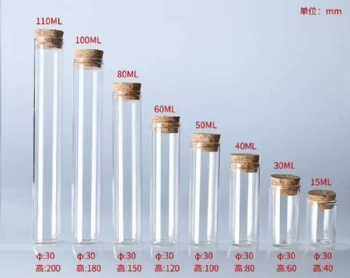Tel:+86-311-88761211 mob:+86-13831197770 skype:+86-13831197770 Whatsapp: +86-13831197770
Glass And Plastic: 7 Factors To Consider When Packaging Your Products(1)
Glass bottle suppliers will share this article with you.
If you can form the first impression of a stranger in just 7 seconds, then consumers can evaluate your product in a fraction of the time. Customers may not try your product before making a decision, but judge the book by the cover, or in this case, judge the product by the container. Materials play a large role in it. Glass and plastic containers constitute the vast majority of bottles, cans and iars on the shelf. We have listed 7 key factors to help you decide: Which is better, glass or plastic?
1. Perceived quality between glass and plastic
Consumers believe that the quality of glass and plastic are different. A 2015 study found that participants believed that food wrapped in glass was more pleasant than food wrapped in plastic. Because its prices tend to be more expensive, Google Glass provides a premium experience in terms of look, feel, and weight, which is essential for high-end juices, craft cold brew beer, or other products that want to promote a complex marketing image.
On the other hand, the glass was broken. Plastic is durable and easy to use. If you give a child or baby a glass bottle, he/she can easily fall on the ground, it is dangerous. Plastic is not as slippery as glass, and it can be molded into various shapes and sizes, such as using ergonomic finger molds to make the neck, so that the grip feels better and the operation is more convenient.
2. Differences in properties and chemical compatibility
Glass is inert and impermeable, making it ideal for sensitive products in the pharmaceutical or personal care industry, as well as liquids that can be stored for a long time, such as spirits and other alcoholic beverages. Compared with plastics, it has poorer permeability to carbon dioxide and oxygen, which can keep foam products in foam for a longer period of time. It can handle various temperatures and the glass will not warp under pasteurization.
Plastic is versatile. It has many varieties, such as polyethylene terephthalate (PET), high density polyethylene (HDPE), low density polyethylene (LDPE), polypropylene (PP) and more. Each material has its own chemical compatibility, temperature rating, impact resistance, etc. With so many options, you will most likely find a plastic container that suits your product and purpose.
3. Transport glass and plastic in bulk
Shipping glass quickly becomes expensive. This is because glass is usually more fragile and heavier than plastic, resulting in higher shipping costs. A 2 fluid ounce plastic bottle may weigh only 0.023 pounds. And its glass material weighs 0.177 pounds. Compared with a bottle of wine, this seems to be a small difference. When ordering pallets in bulk, it can add up to a large number and affect your profit margins. Even with extreme care during transportation, some glass bottles may break during transportation.
On the other hand, plastic is light and durable, and is more suitable for transportation than glass. Compared with glass, it requires less natural gas and oil to transport, consumes less energy, and leaves a smaller carbon footprint. If you need to transport your containers over long distances, plastic brackets are an economical and generally environmentally friendly choice.

Tel:+86-311-88761211
Fax :+86-311-88761211
Mobile:+86-13831197770
E-mail: admin@mkingcn.com
Skype: +86-13831197770
Whatsapp: +86-13831197770



Copyright 2025 © MyKang Trading Co.,LTD All Rights Reserved.